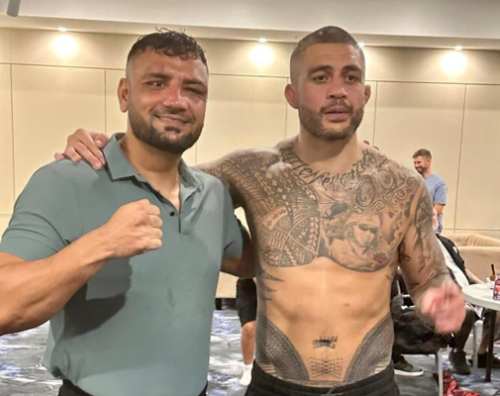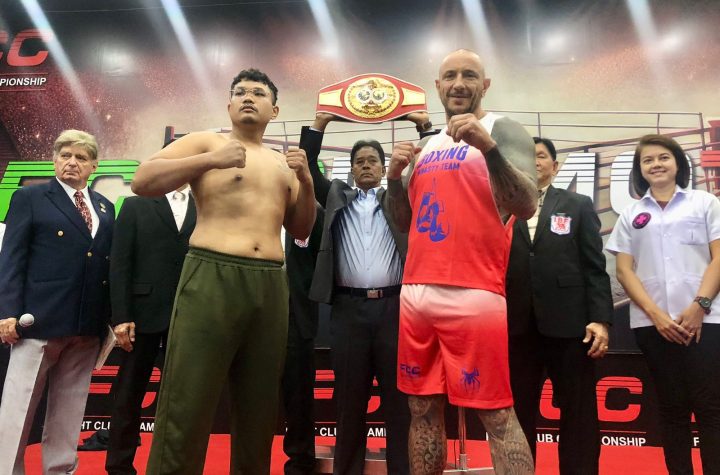
MMAfighting.com
There was a time when Raquel Pennington was building up an undeniable momentum. In the span of 14 months from September 2015 to November 2016, she won four times, capping off that streak with a dominant win over former UFC bantamweight champion Miesha Tate. On the cusp of a title shot, she was forced to the sidelines to undergo a series of surgeries on her shoulder, wrist and mouth. As she recovered and a matchup with current champ Amanda Nunesseemed assured, an ATV accident resulted in a broken fibula, putting her out of action once again.
Eighteen months after her last fight, Pennington is finally ready to fight again. Amazingly, the matchup with Nunes has remained available to her, and the two will square off in the main event of UFC 224 in Rio de Janeiro this Saturday.
As UFC women’s bantamweight title matches go, it is among the least buzziest in ages. Following the reigns of Ronda Rousey, Holly Holm and Tate—and given Pennington’s long layoff—that is to be expected. More troubling is the expectation that it will be a runaway for Nunes, who has been bet up to a massive 10:1 favorite, according to BestFightOdds.com.
The belief of most observers is that Nunes is an advanced version of Pennington. In truth, they do many of the same things well but also feature some key differences.
Both key their success off their standup game. While Nunes (15-4) was once a wildly aggressive striker, she has exhibited refinements to her style over her last few fights, starting with the most simple of strikes, the jab.
In the early part of her career, Nunes’ confidence stemmed from her power. That’s understandable, given that she scored her first three wins in knockouts of 11 seconds, 47 seconds and 68 seconds, respectively.
As she’s gained experience and worked with the fine coaches of American Top Team, Nunes (15-4) has pulled off the gas pedal and found a hybrid style that works at both average fight speed and at her more favored barrage pace. To be sure, Nunes’ preference is always to bombard and overwhelm her opponent. That’s in her fight DNA. But she has proven she doesn’t have to give in to that urge to win.
Most notably, she has added a sharp jab that allows her to work into her powerful straight right in a more measured and patient approach. Her willingness to pull back from a full sprint paid dividends in her last fight against Valentina Shevchenko, when she went five full rounds for the first time and pulled out the final round to escape with a split-decision. For someone who has been surrounded by stamina questions for years, it represented a breakthrough moment.
Nunes can either start her offense with the jab or with leg kicks. Against Shevchenko, for instance, she whacked her challenger with 56 leg kicks out of her 89 landed strikes, a ratio well above average. Again, taking her opponents’ focus off her heavy right has the added benefit of making that punch more difficult to see when she finally uncorks it.
Nunes has an effective clinch game, aided by her strength, although it’s not a position she actively works toward. Most of her efforts are at working to keep the fight at her preferred strength of striking, this despite the fact that she is a Brazilian jiu-jitsu black belt with a powerful top game. If she wanted to, she would likely be capable of a takedown-and-control approach, but even though it’s not a favored weapon in her game, it’s a nice break-glass-in-case-of-emergency tool that came in handy in her most recent title defense.
As noted, Pennington has several similarities to Nunes. Like the champion, she is well-rounded but prefers to strike above all else. However, while Nunes uses all eight points in her striking arsenal, Pennington focuses mostly on her boxing skills. For instance, in her most recent win (against Tate), she had only four leg kicks in the bout out of 156 attempted strikes, per FightMetric.
In watching Pennington fight, it’s clear that she is not flashy or overly creative. Instead, she focuses on the basics and does them very well. That’s evidenced by her 51 percent connection rate. Pennington does it with excellent distance control. She’s quite competent at staying just out of range of her opponents, then firing back effective counters. Like Nunes, she has a fast, sharp jab that she’s capable of using to start her offense, brush back opponents or simply as a single strike. Generally, Pennington is selectively aggressive. She seems most comfortable countering, but she will comfortably move into attack when opponents begin taking backward steps.
Among Pennington’s top attributes is her strength. She is demonstrably rugged and strong, as evidenced by several memorable moments during her career, such as when she lifted Tate off the ground with a standing guillotine choke, or when she bulldog choked Ashlee Evans-Smithinto unconsciousness.
Pennington’s ground skills are not to be underestimated here, either. While she doesn’t have the black-belt lineage of Nunes, she has proven herself to be dangerous in scrambles, and from both the top and bottom, including a chokeout of the powerhouse Jessica Andrade.
In attempting to determine a differentiator between Nunes and Pennington, it’s hard to look past Pennington’s recent stretch of inactivity as a key indicator. Going from an 18-month layoff into the first five-round fight of her career is a tall order, let alone doing so coming off a serious leg injury. With that, and a rare opponent that can match Pennington’s ruggedness, it’s fair to question whether Pennington will hold up to a 25-minute bout.
Given their styles, it’s safe to assume a striking-heavy match. Nunes is a slightly better striker with more variety and power, and over the course of five rounds, that should add up in her favor. While the odds are more lopsided than they should be, in the end, the preference is probably correct. Nunes wears down Pennington and scores a late stoppage around the fourth round.





More News
Unconscionable Betrayal: Tyson Pedro Camp’s Shameful Swindling of Taimoor Khan
Casimero TKO’s Sanchez in 1st round
Raquinel wins WBC Continental Americas super flyweight title